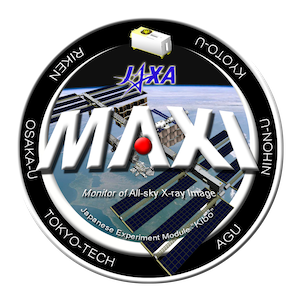Description
Chair: M. Serino (AGU)
This talk will start with a presentation of the SVOM mission and the homonymous satellite, which was successfully launched on June 22nd 2024, with a special focus on the ECLAIRs hard X-ray imager. Then, the operations performed during the commissioning and early science phases will be described, along with the tuning of some crucial parameters. This will lead to the description of ECLAIRs...
The Monitor of All-sky X-ray Image (MAXI) has been observing the X-ray sky and has detected 164 GRBs since its launch in 2009. MAXI is suitable for detecting transient events such as GRB due to its unique scanning observation. Recently, Low luminosity GRBs (LL GRBs) have become a key in multi-messenger astronomy. However, only a few of these events have been observed by all detectors so far....
Lobster Eye Imager for Astronomy (LEIA) is a pathfinder of the wide-field X-ray telescope of the Einstein Probe (EP) mission. The piggyback imager, launched in 2022 July, has a mostly unvignetted field of view of 18°. 6 × 18°.6. Its spatial resolution is in the range of 4–7 arcmin in FWHM and the focal spot effective area is 2–3 square centimeter, both showing only mild fluctuations across the...
The central engine that powers gamma-ray bursts (GRBs) is still not identified. Besides hyper- accreting black holes, rapidly spinning and highly magnetized neutron stars, known as millisec- ond magnetars, have been suggested to power both long and short GRBs. Indirect indications of a magnetar engine in these merger sources have been observed in the form of plateau fea- tures present in the...
The Chasing All Transients Constellation Hunters (CATCH) space mission, proposed in 2019, is an AI-controlled astronomical constellation dedicated to monitoring X-ray emissions from tran-sients across the entire sky. The mission aims to enhance our understanding of the extreme uni-verse through X-ray imaging, spectral, timing, and polarization measurements. Plans are also in place to introduce...
The first detectable light of a supernova explosion is the shock breakout emission, which is produced as the supernova shock wave breaches the star's surface and which acts as a powerful diagnostic for the pre-explosion state of the progenitor system. I will discuss a novel way of categorizing the possible spectra observed immediately after breakout, and the recent advances in shock breakout...

